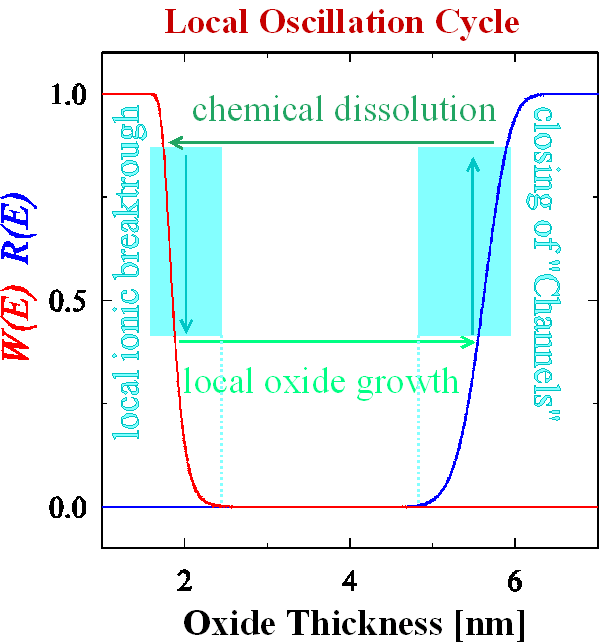As illustrated in the following figure the life cycle of a single current
burst is therefore just
- e.g. starting with a thick oxide layer the oxide thickness decreases due to
purely chemical disssolution
- Reaching a lower limit of the oxide thickness which corresponds to a high local electrical field strength an
ion conducting channel opens depending on
the probability function W(E)
- oxide growth electrochemically; the growth rate depends on the ion current
through the channel; for sake of simplicity we assume a constant current while
the channel is open. The result does not depend strongly on this assumption
since the growth rate is allready much faster than the dissolution rate
 Fig. 6
Fig. 6
 Fig. 6
Fig. 6
